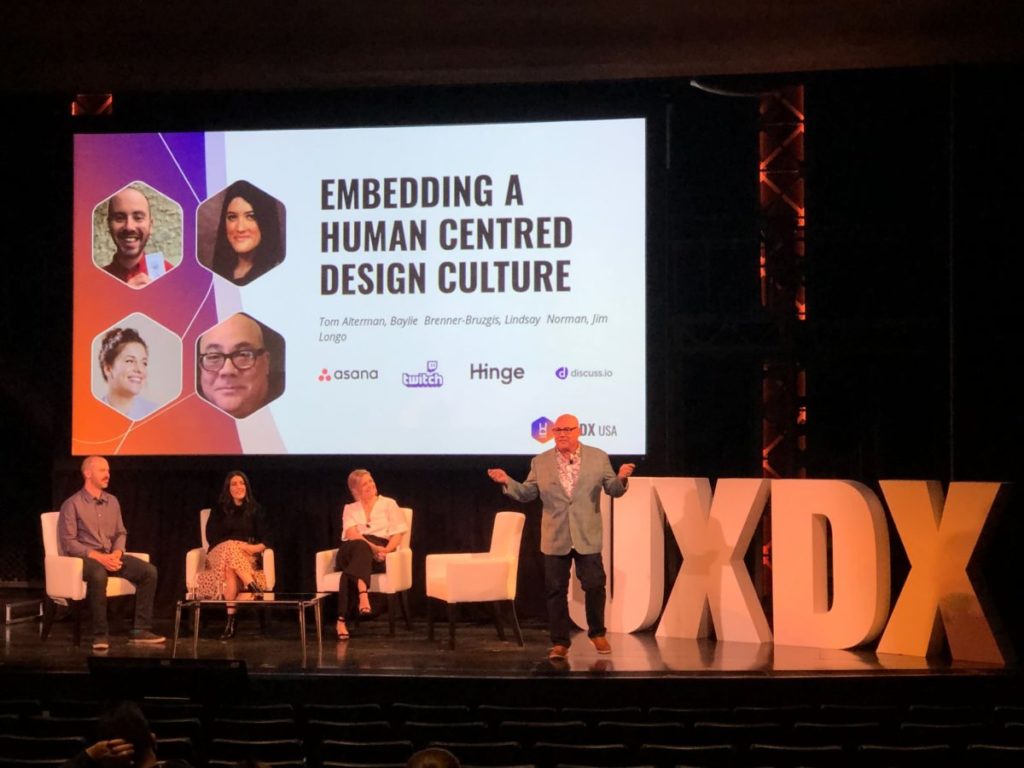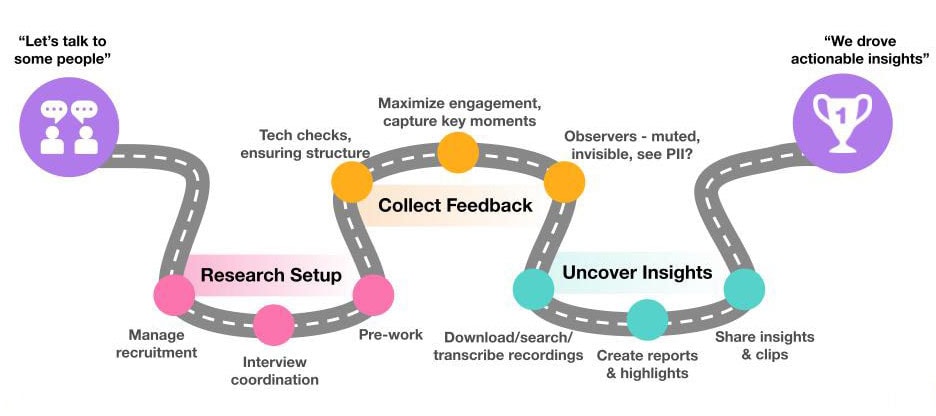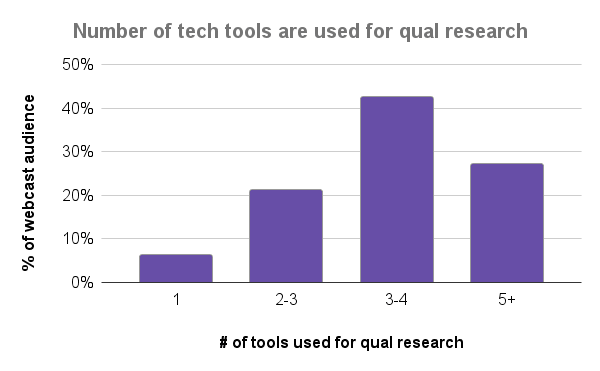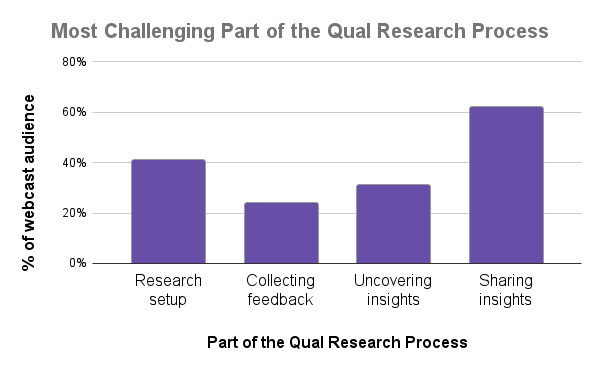
In the recent webcast, “Rethinking the Agile Manifesto for Research – And How to Put Experience at the Center,” Forrester speaker AJ Joplin, Senior Analyst for CX Research Practices and Tools, joined Guy Maxwell, Head of Qual at Walnut Unlimited, to give best practices on competing in the customer experience economy through better, faster qualitative research.
The dynamic conversation, moderated by Discuss’ Chief Growth Officer, Adam Mertz, came at an important time for researchers, as well as CX and UX teams. As a result of huge disruptive events and unprecedented market volatility, the need for businesses to understand people and deliver strong experiences — and quickly — is growing.
Unfortunately, brands that are struggling to understand people are not a rarity in this consumer climate. As Adam mentioned, a recent HBR Analytics survey said that while 90% of customers expect companies to listen and anticipate their needs, 28% of executives say their organization has a good understanding of customer satisfaction across all phases of the customer journey.
This webcast conversation focused on what the implications are for agile customer research in driving up the percentage of execs who feel confident their teams are putting customers at the center.
How can brands and agencies deliver customer insights fast enough to meet the moment, incorporating agile methods to solve customer pain points in record time and ‘wow’ senior stakeholders?
The short answer is, the agile manifesto is not enough. While it’s a great guide followed by many, this manifesto can unfortunately lead to suboptimal results if applied to research processes — what works for the product development team doesn’t always work for researchers.
AJ and Guy shared their perspectives on how to incorporate customer voices into design, product, and other brand decisions. Speaking to researchers’ common challenges around project setup logistics, extracting insights and sharing them quickly, here are three insights uncovered from their discussion:
- The winding road of in-depth insights is real.
Many times, extracting actionable insights from customer conversations can feel as unwieldy as a country road, with hairpin turns along the way. You can put in so much time finding and scheduling respondents, only to have no-shows or discover they’re not the right project fit. “Every point on the road is fundamentally important — you have to get the right people to take part in the research, otherwise the results are going to be largely invalidated,” Guy said. According to AJ, the insights gathering phase brings its own set of twists and turns: with so much data, how can you synthesize and make sense of it quickly without going off track? Does the data match what you were planning? The struggle (and the road) is real for most researchers, but there are tech-enabled shortcuts that can get you where you need to be faster.
- Using multiple tools is a key challenge to agile research.
According to an in-webcast poll survey, over two-thirds of attendees are using multiple tools to conduct qualitative research. According to Guy, five or more research tools is the unfortunate reality for most researchers. This can lead to a number of inefficiencies as researchers need to master different tech tools and remember which tool to turn to first. The discussion on this point centered around how multiple tools can often end up contributing to the longer, winding road to insights.
- The biggest challenge is sharing insights.
Another in-webcast poll showed that a majority of attendees (62%) chose “sharing insights and reports with peers quickly” as the most challenging part of qualitative research. As Guy noted, his clients’ desired timelines for receiving insights has been cut in half over the past few years. Therefore solving this pain point of quickly sharing insights is certainly becoming more critical.
According to Guy, who’s had over 25 years of market research experience with leading agencies, agile research methods have been intimidating to researchers for a number of years. But today, having a platform like Discuss has changed the way he defines and conducts agile. He explained how, for a haircare brand client, he was able to save six weeks of the design team’s time through a more collaborative and iterative process:
“We set people a pre-task to understand the kind of products they used in their homes, for what occasions and in what settings,” he said. “On day two, I was getting data back and able to action it. We then listened to what a group of people had to say about various brands and packaging and trigger mechanisms — with designers joining the discussion on the fly. We could then quickly action their thoughts and ideas, saying, ‘You asked for option X, Y, Z, and here it is, what do you think of that?’
It’s another kind of definition of agility. It’s not just about speeding up the process overall, it’s about being able to act in a nimble, reactive way really quickly.”
To hear the complete conversation to truly learn how research can become more agile and actionable, watch the entire webinar, “Rethinking the Agile Manifesto for Research — And How to Put Experience at the Center.”
Ready to unlock human-centric market insights?
Related Articles

3 Steps to Faster Insights
Same-day deliveries and two-day shipping have changed our expectations as consumers. Just as we expect our essentials or last-minute gifts…
Same-day deliveries and two-day shipping have changed our expectations as consumers. Just as we expect our essentials or last-minute gifts…

3 Common Mistakes to Avoid in Qualitative Session Setup
Qualitative research sessions often have a lot of moving pieces even before a session can begin. Take, for example, a…
Qualitative research sessions often have a lot of moving pieces even before a session can begin. Take, for example, a…

Discuss Addresses Top Pain Points for Teams at UXDX USA
In late May, members of the Discuss Product and Sales teams attended UXDX’s New York conference, aimed at Product, UX, Design…
In late May, members of the Discuss Product and Sales teams attended UXDX’s New York conference, aimed at Product, UX, Design…



